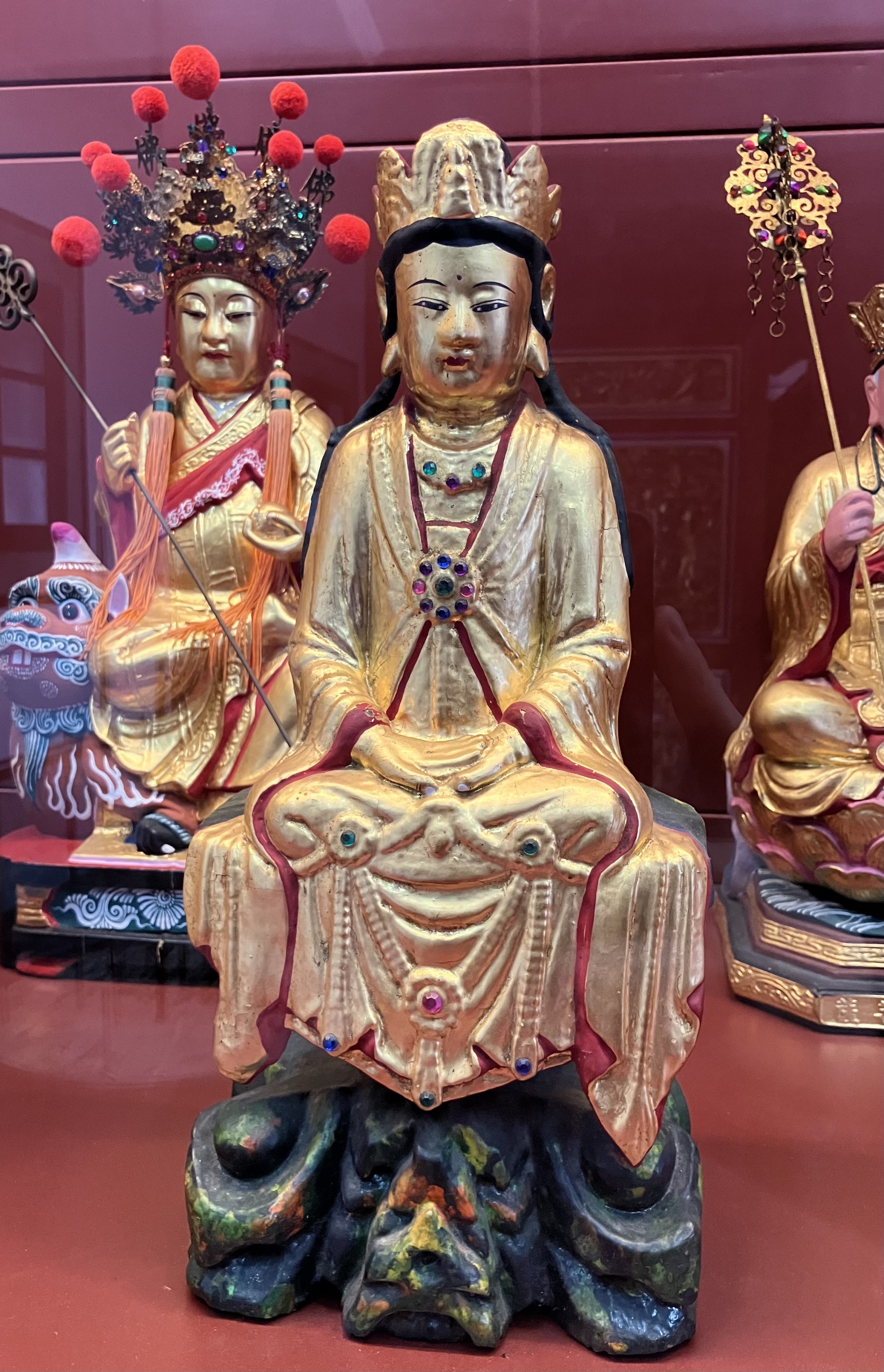
本廟簡史與建築格局
A Brief History and Layout of the Temple
艋舺清水巖復原鳥瞰透視圖(李乾朗繪)
Architectural Perspective(Drawn by LEE, CHIEN-LANG)

祖師廟門面-三川殿前步口
The Temple's Main Entrance and the Sanchuan Hall
紀念頂下郊拚事件的「白姓」燈籠
lanterns honor Bai Qi-xiang protecting the temple
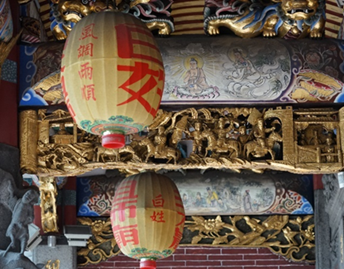
「壽翁仙鶴」與「麻姑獻壽」是非常美麗且罕見的台灣磚雕。
Ederly man with a crane, and a goddess with a deer.
Both symbolize health and longevity.
The carvings are 19th-century traditional craftsmanship.
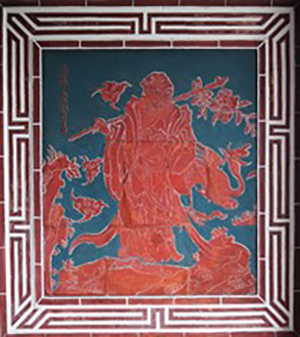
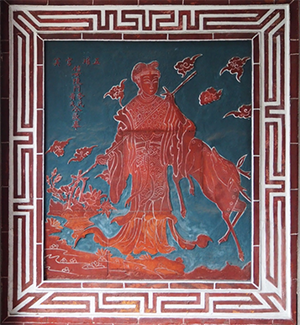
廟的左側為「龍邊」,右側為「虎邊」,信眾應由龍邊入、虎邊出。
left side is "Dragon Side," and right side as the "Tiger Side"
Visitors enter through the left door and exit through the right.
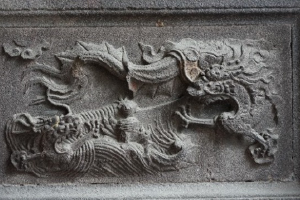
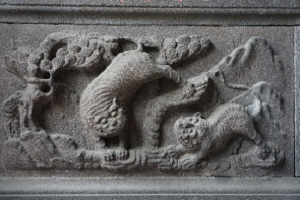
台灣名家傳統彩繪與歷史匾額-三川殿後步口
Traditional Art and Historic Plaques at Sanchuan Hall
1885年清法戰爭後,為感謝清水祖師駐站,淮軍將領章高元所贈之「佛化蓬萊」匾
After the Sino-French War, Qing Dynasty generals presented this“Fǒ huà péng lái” plaque to express his gratitude.
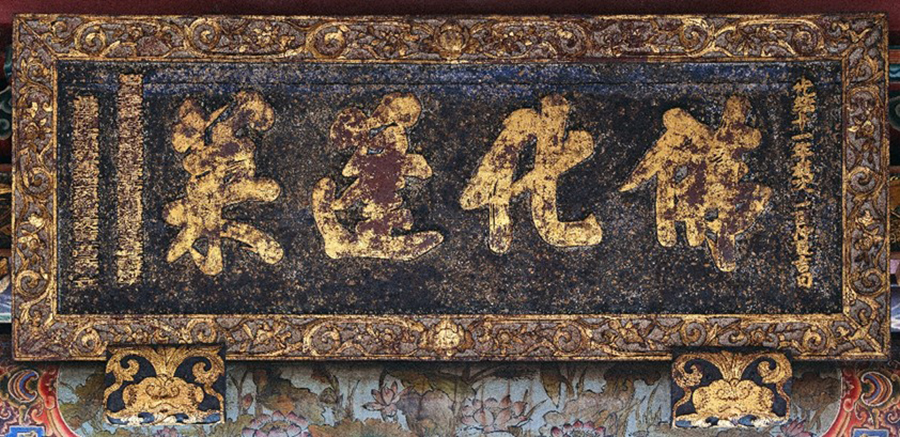
「擂金花鳥樑」為國寶級大師陳玉峰於1957年在本廟所繪製的作品
This gilded floral and bird beam is piece by the renowned master painter Chen Yu-feng。

由台灣國寶級彩繪大師陳壽彝所繪之門神,象徵「風、調、雨、順」
Those door god representing 「wind、harmony、 rain、smoothness and order」
wish for favorable weather and harmonious days.




奉祀主神的殿堂-正殿
The Main Hall and its Principal Deities
正殿是艋舺祖師廟最核心的殿堂,祀奉的主神為清水祖師。
The Main Hall is the heart of Mengjia Zushi Temple. Dedicated to its principal deity- Qingshui Zushi.
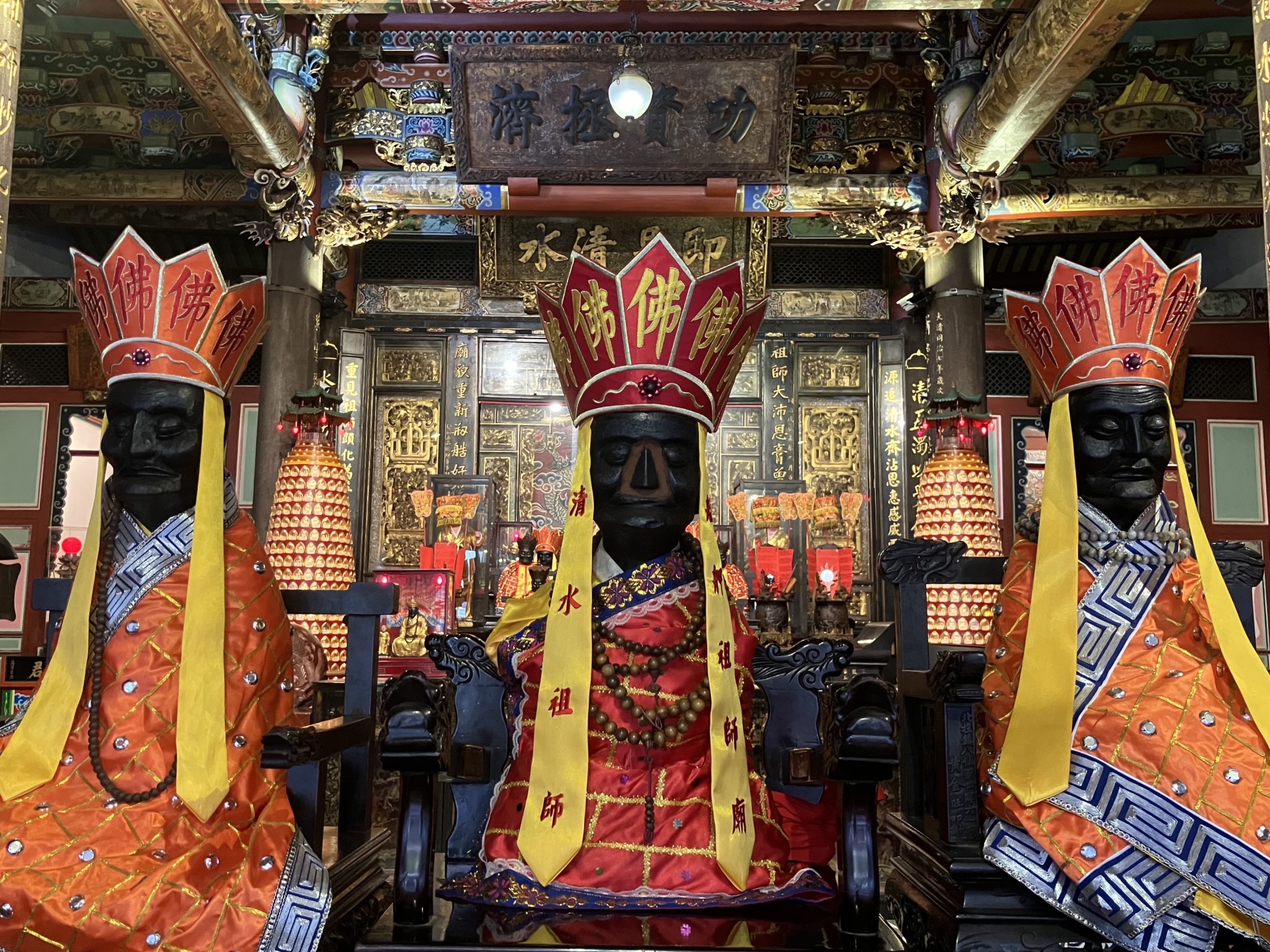
這裡也供奉媽祖、關聖帝君、觀音佛祖、土地公,是信眾與神明溝通最重要的場所。
It also enshrines Mazu, Guan Sheng Dijun, Guanyin and Tudigong and is the most important place for believers to communicate with the divine.
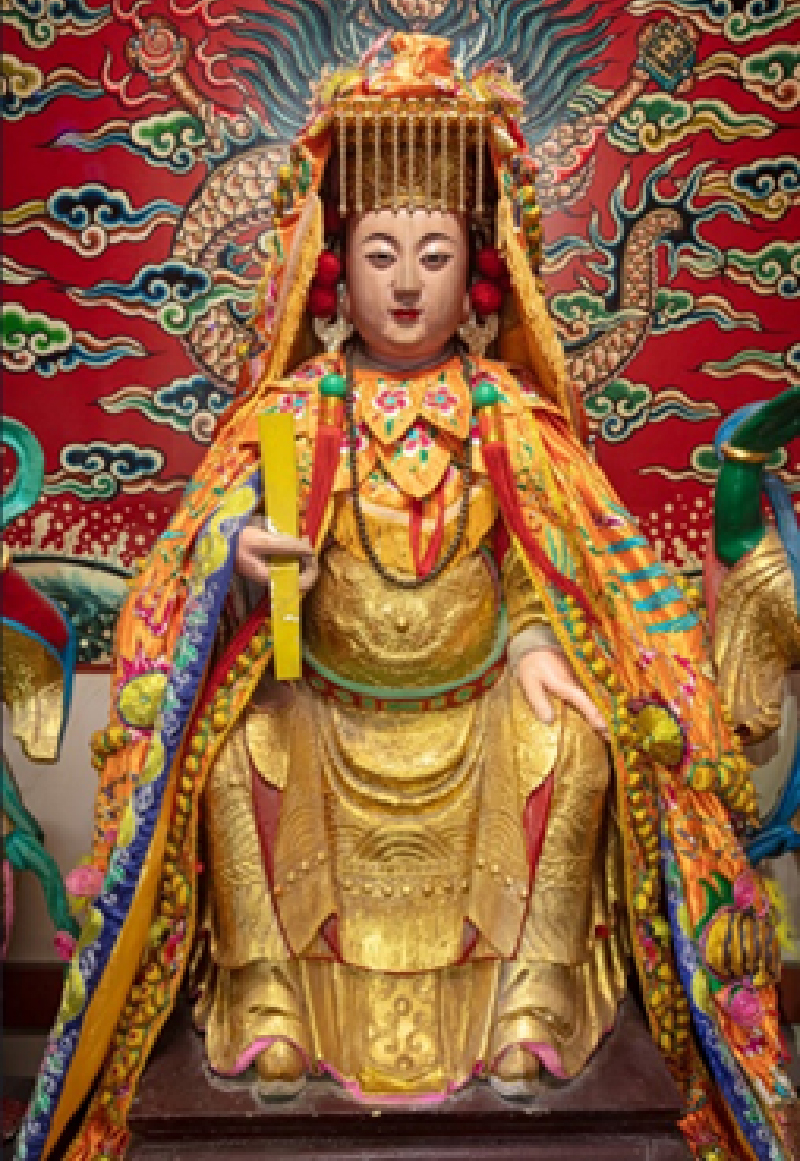
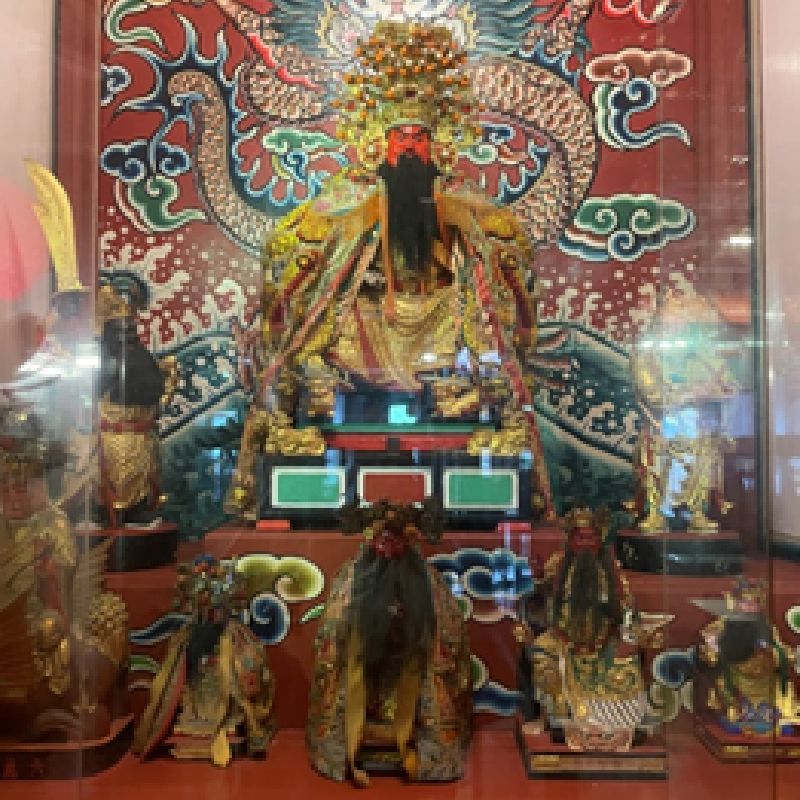
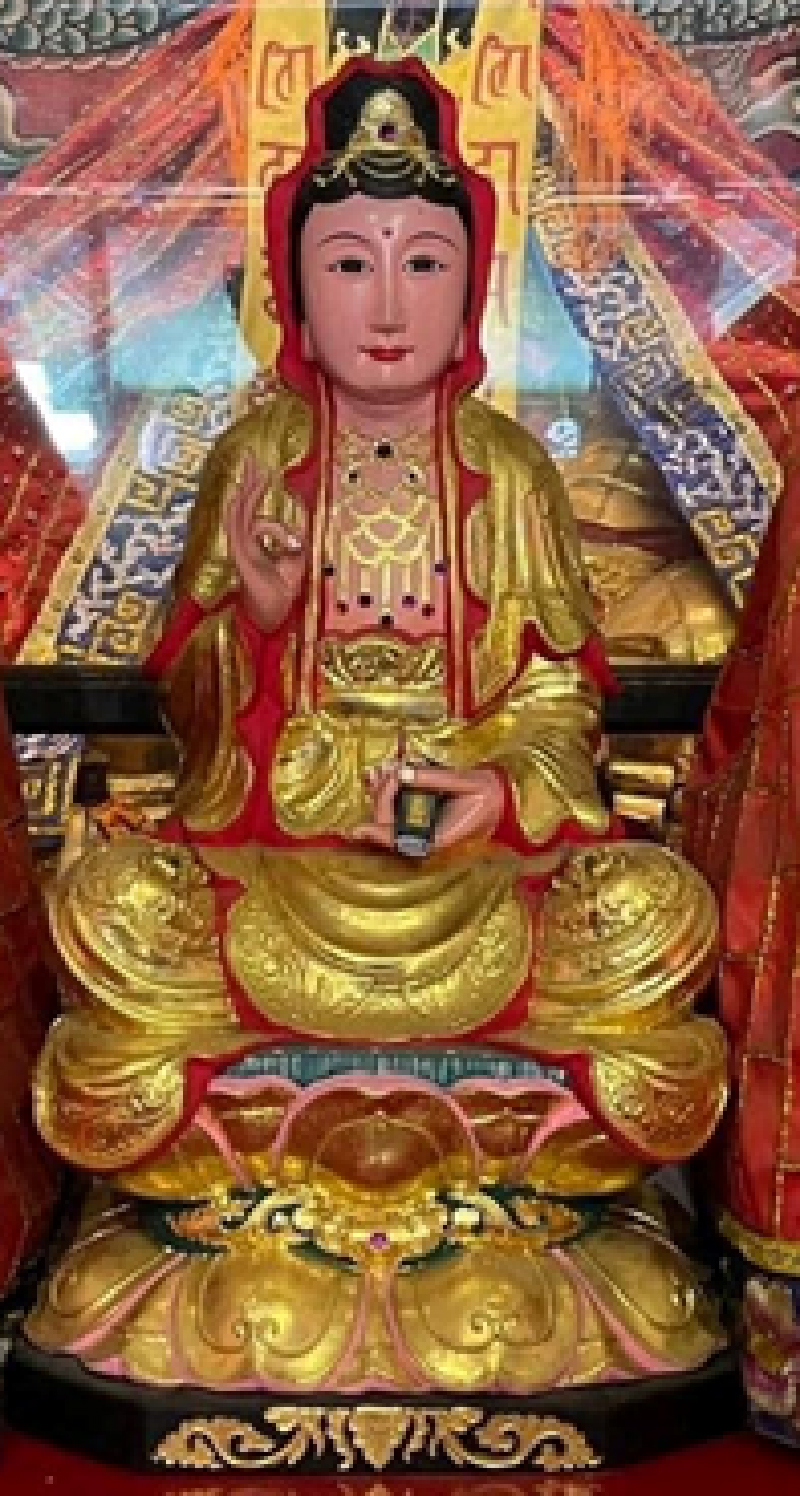
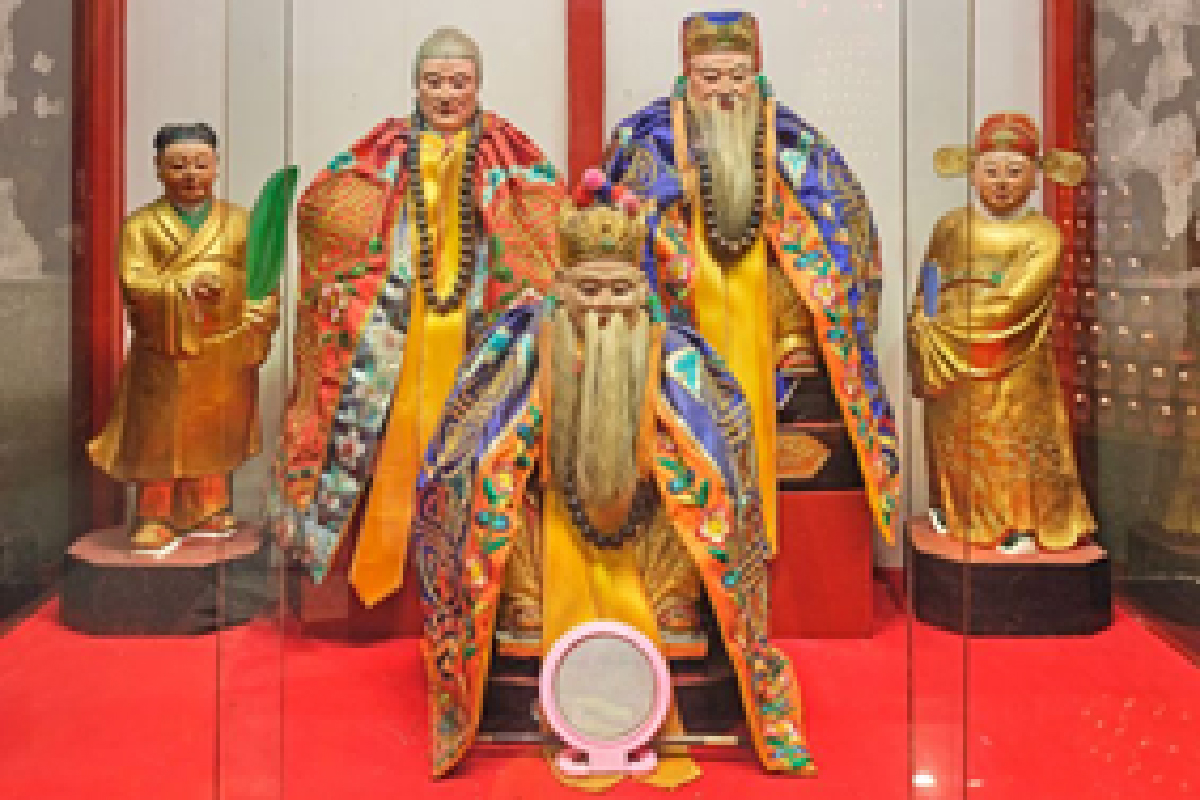
張、黃、蘇、李四大將軍是清水祖師親自收服的重要護法
four great generals—Zhang, Huang, Su, and Li , they pledging their loyalty and becoming Qingshui Zushi's divine guardians.
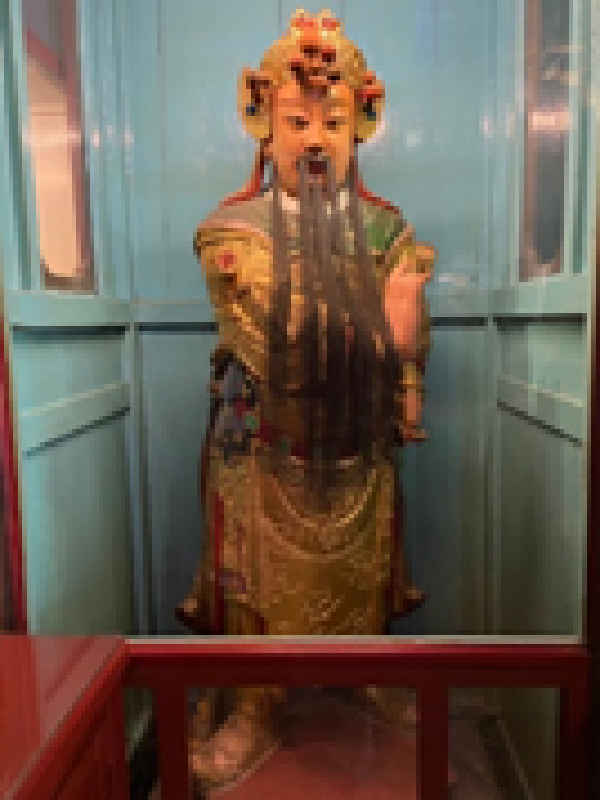
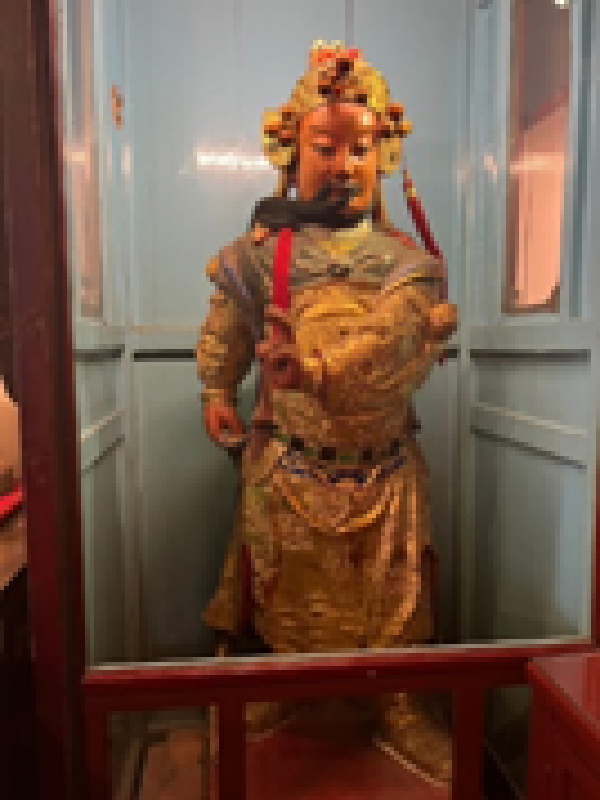
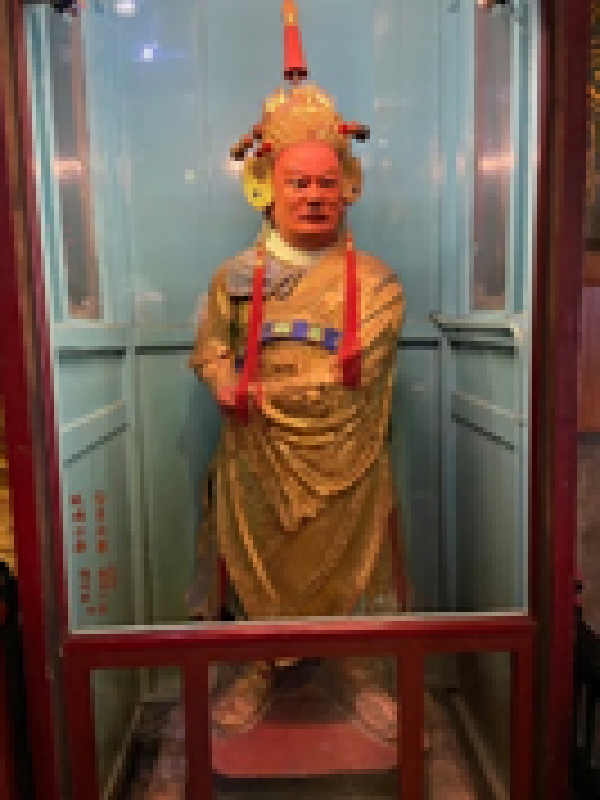
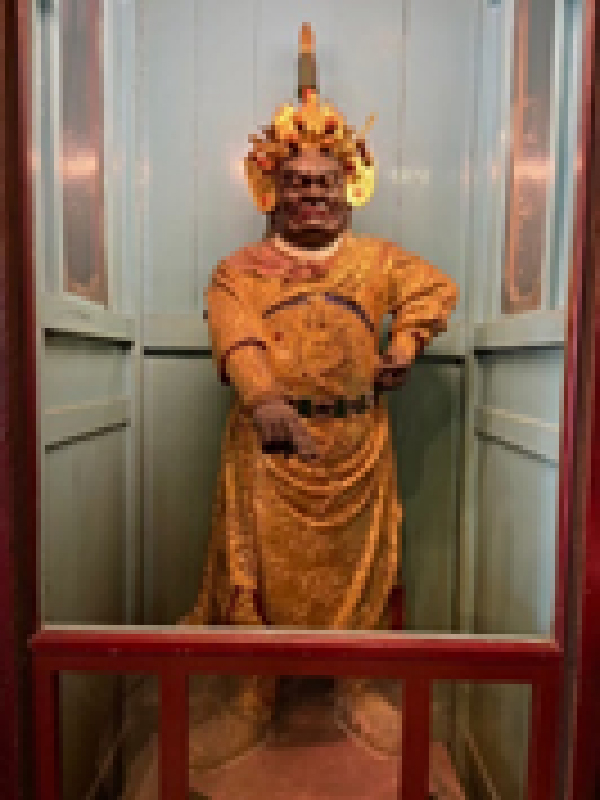
充滿傳奇故事的神像-落鼻祖師
The Legendary Dropping-Nose Zushi
「蓬萊老祖」又稱「落鼻祖師」,因特殊的外型與神奇的故事而聞名。
當重大事件發生前,祂的鼻子就會掉下來,提醒並保護世人。
Penglai Zushi also known as「Luobi Zushi」,he is known for miraculous legends .
Legend says his nose would fall off as a warning of impending danger and Protecting people.

1884年清法戰爭時,清軍迎請落鼻祖師前往助戰後,法軍果然快速撤退。
因此光緒皇帝特別親頒「功資拯濟」匾。
During the Sino-French War in 1884, the commanding general invited Luobi Zushi to the front lines. Soon after, the French army retreated.
The Guangxu Emperor awarded Luobi Zushi an honorary imperial plaque reading “Gōng zī zhěng jì” meaning “Meritorious Deeds and Salvation”.
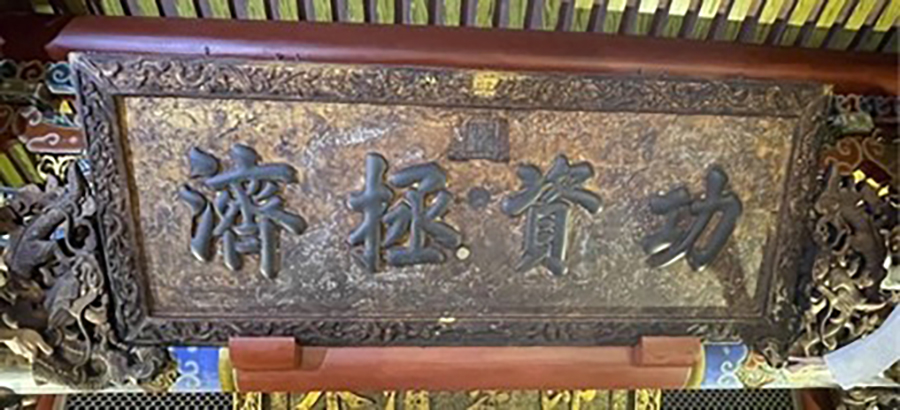
文武雙全的如意文昌殿
A Shrine for Civil and Military Scholars – Wenchang Hall
本廟文昌帝君兩旁所佇立的仙人,分別是--保佑文運、手持「金榜題名」卷軸的朱衣神君;以及手持令旗、助佑武運的韋馱神君(或稱金甲神君)。
Two deities stand beside Wenchang Dijun--Red-Robed Dijun, holds a scroll inscribed “Jīnbǎng tímíng”, meaning “your name onthe golden list”.And the one holding the flag is Skanda.
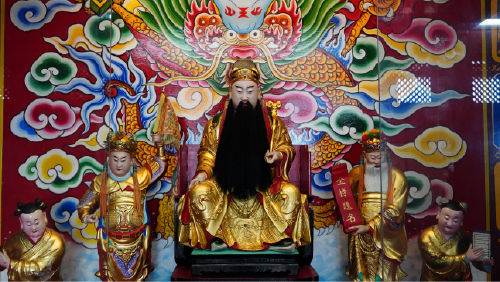
魁星被認為是北斗七星之首。魁星爺(大魁夫子)站在「鰲魚」之上,象徵「獨占鰲頭」,有祝福奪得榜首的美好寓意。
Kuixing, the chief star of the Big Dipper constellation. He stands atop a mythical fish-dragon called“áoyú”. It is meaning “may you become the first scholar”.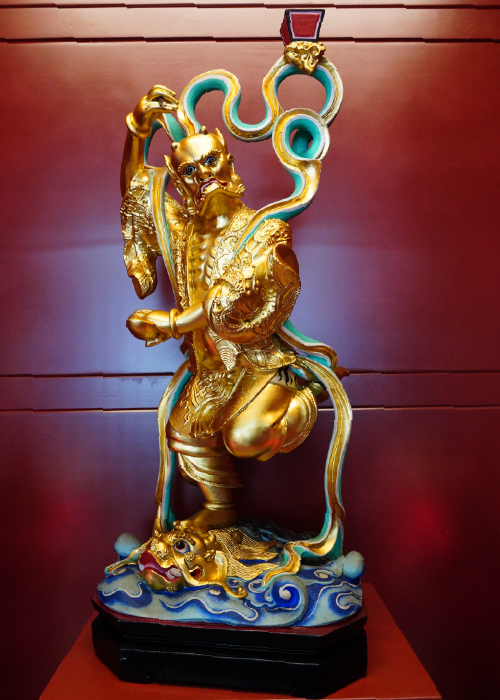
不曾被遺忘的艋舺祖師廟守護者-地藏殿
The Never Forgotten Guardian of Mengjia Zushi Temple – Dizang Hall
地藏菩薩是最慈悲的菩薩之一,以「地獄不空,誓不成佛」的誓言聞名。
祂的坐騎名為「善聽」,傳說是能協助地藏菩薩體察民間善惡的神獸。
Kṣitigarbha Bodhisattva is one of Buddhism’s most compassionate figures, known for unwavering vow “Until hell is empty, I shall not attain Buddhahood.”
The creature beneath him is named“Shàn tīng,” meaning “good listener”.
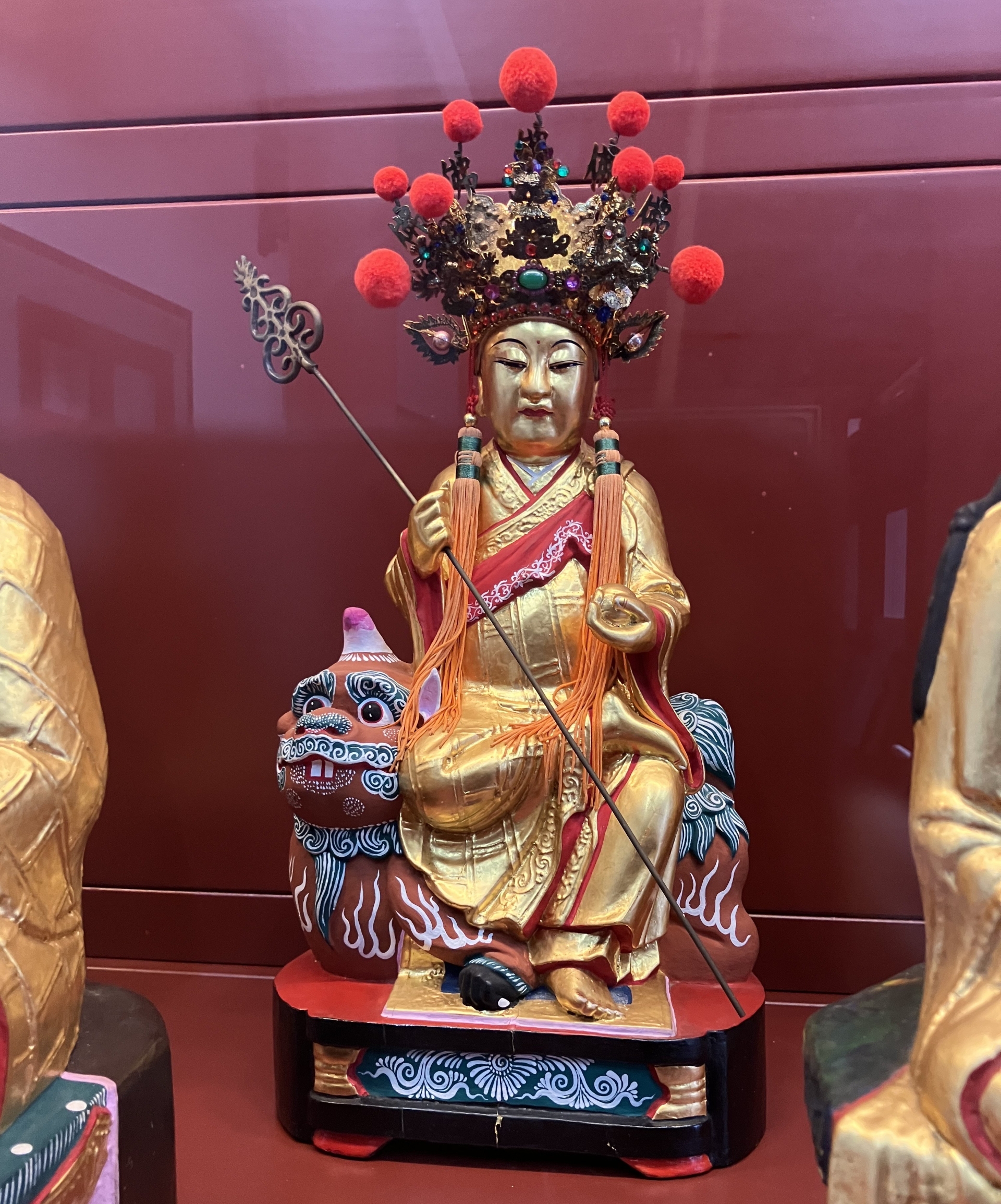
「昭義祠尚義公暨總列神位」是1853年頂下郊拼事件中,為抵禦他族闖入,以生命守護祖師廟的18位壯士之靈位。
The“Memorial Tablet of the Victims Who Protected This Temple” commemorates 18 warriors who gave their lives defending the temple during the Dingxiajiao Conflict.
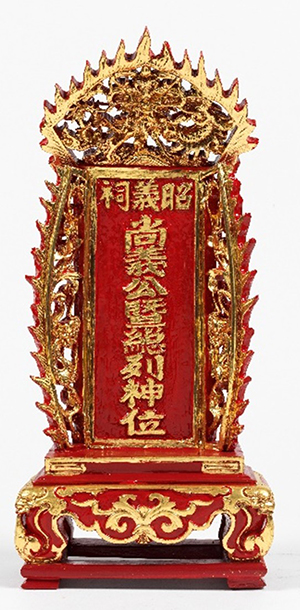
這尊毗盧冠觀音,以形制推斷,約為明、清時期的佛像。通常是早期禪師雲遊四方時隨身所攜帶的佛像。
The Vairocana Guanyin is believed to date back to the Ming or Qing dynasties.
It is said that one monk, after arriving here to practice his faith, left this sacred image behind.
